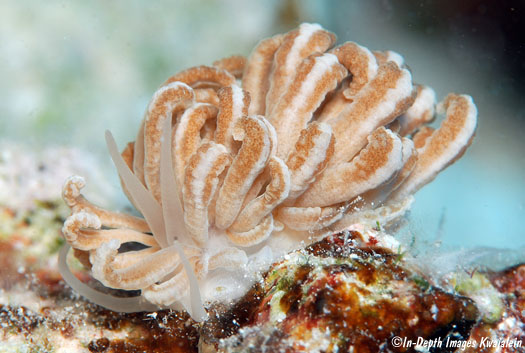
Phyllodesmium jakobsenae is known from the Marshalls from about 10 specimens from Enewetak and several more from Kwajalein Atoll. All were found on Xenia soft coral (see bottom photos). The nudibranchs are known to pick up symbiotic zooxanthellae from the soft coral and retain them in their cerata. The zooxanthellae, unicellular photosynthetic protozoans, use light to produce food which can then be used by the nudibranch. Apparently, the individual zooxanthellae do not last long in these nudibranchs, but they can be continually replenished from the soft coral prey. We originally had this as Phyllodesmium hyalinum, but it seems a better match for the more recently described P. jakobsenae. The first four photos below show one of the Kwajalein specimens found on 15 November 2010. Phyllodesmium jakobsenae was first reported in the Marshalls from Enewetak and Kwajalein Atolls as Phyllodesmium hyalinum by Johnson & Boucher (1984).

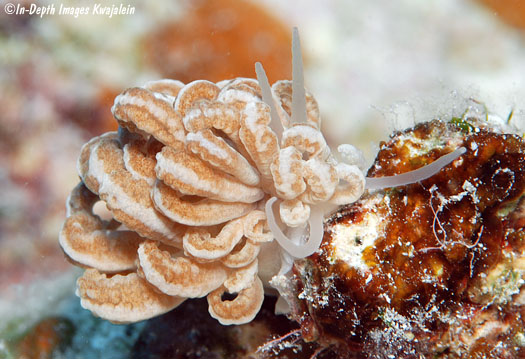
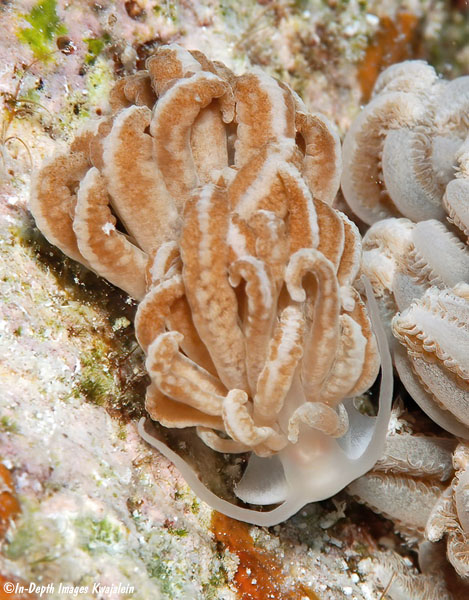
Unlike many eolids, Phyllodesmium jakobsenae does not retain the nematocyst stinging cells of its soft coral prey, so it apparently relies on camouflage to keep from being eaten. The nudibranch is difficult to distinguish on the Xenia colony below.
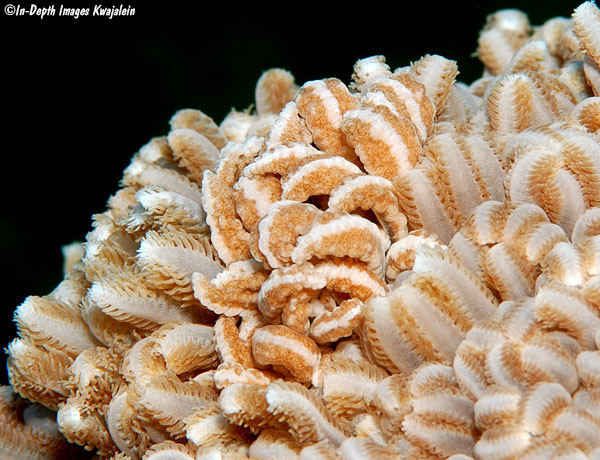
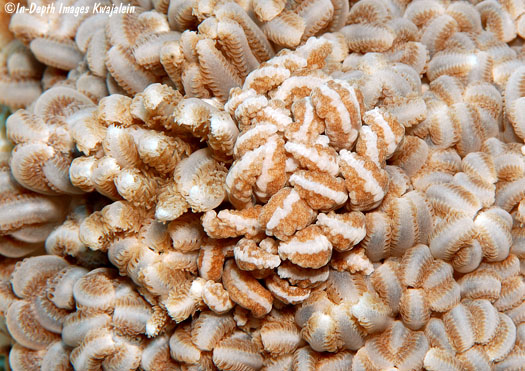
Close up of the cerata.
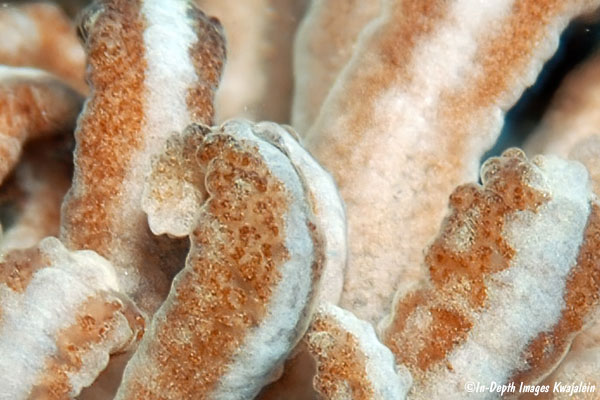
As this is written (August 2016), there is not much Xenia present at least in the southern half of Kwajalein Atoll. It used to be more prevalent with numerous colonies on lagoon pinnacles and reefs, particularly in the middle third of the lagoon. Right now the only place we know Xenia is common is on a single large patch reef near Meck Island, where the specimen below was recently found.
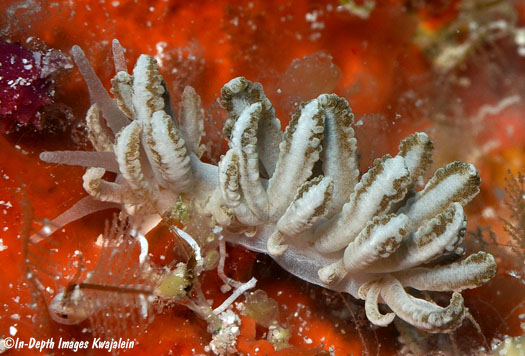
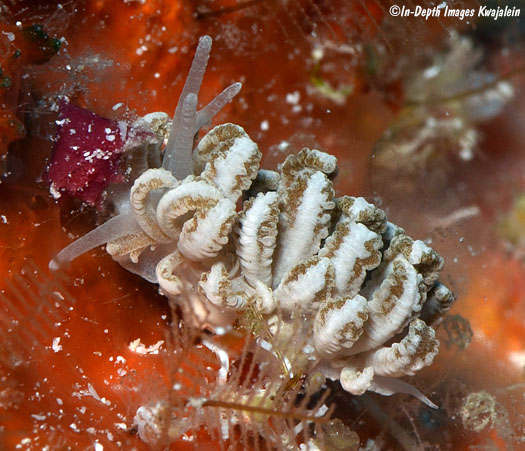
Below is a specimen from Enewetak Atoll.
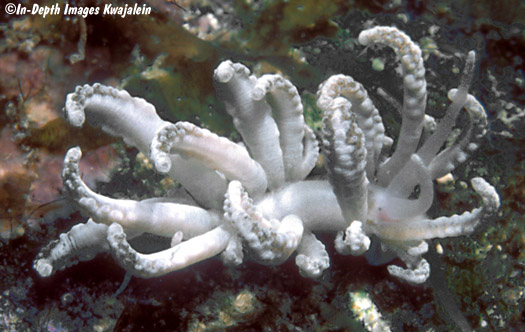
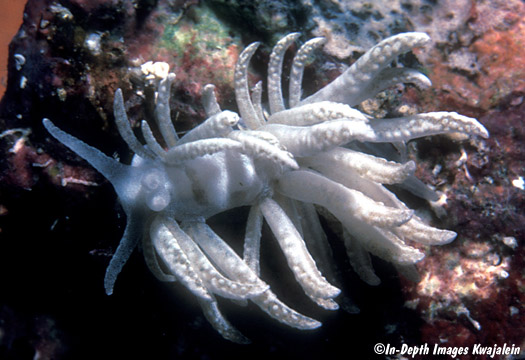
The photo below shows the position of the little white anal papilla, just behind the second ceratal arch (around midbody).
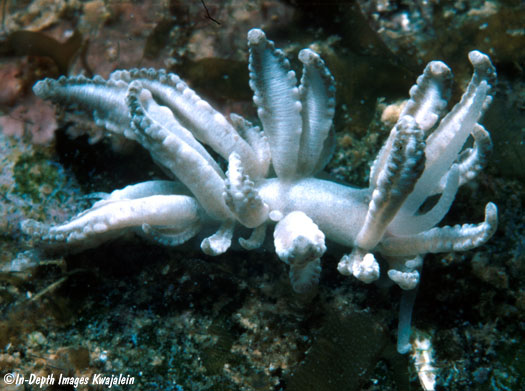
An individual hidden within the polyps of a Xenia colony.
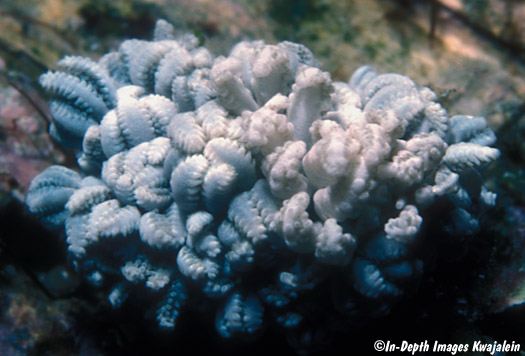
This is a colony of Xenia, the soft coral prey of Phyllodesmium jakobsenae. When undisturbed, the polyps continually open and close. This "grasping" might be used for capturing planktonic food.
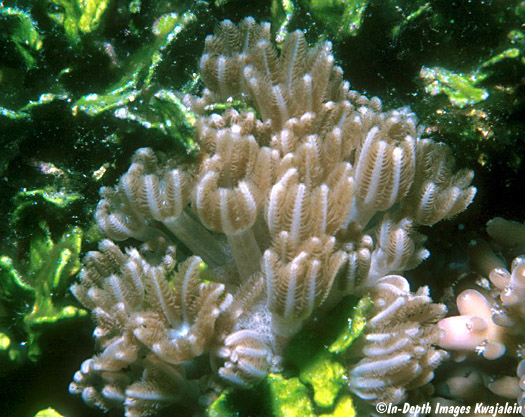
Created 8 January 2007
Updated 24 November 2021